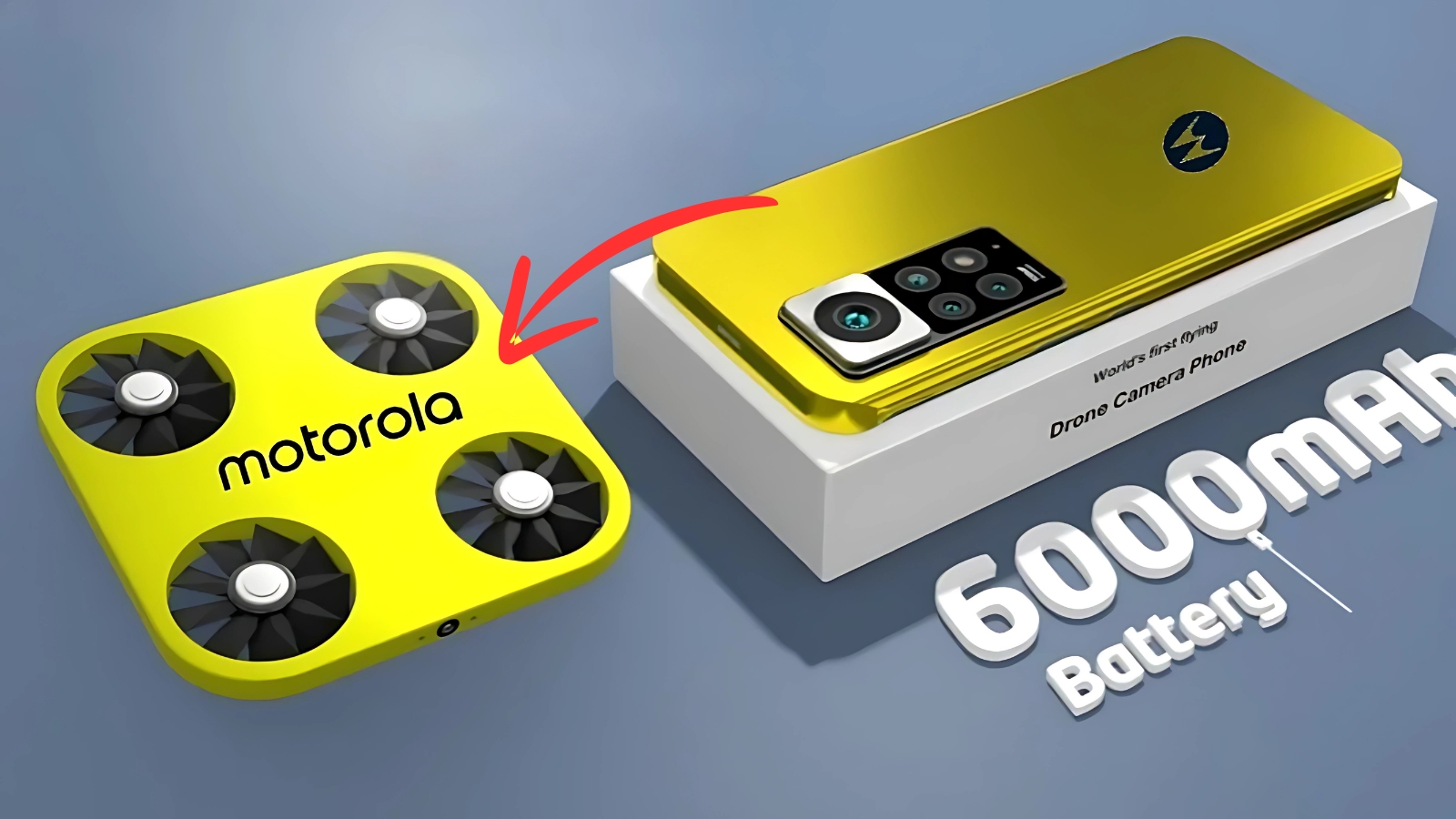Motorola Drone Phone 5G : The smartphone industry stands at the precipice of another revolutionary leap. While manufacturers have long competed on camera quality, processing power, and display technology, Motorola appears ready to redefine what a mobile device can achieve. The rumored Motorola Drone Phone 5G represents a fascinating convergence of aerial photography and telecommunications technology that could fundamentally alter how we capture and share our world.
Breaking New Ground in Mobile Innovation
The concept of integrating drone technology into smartphones isn’t entirely new, but Motorola’s approach suggests a level of sophistication that previous attempts have lacked. Industry insiders suggest this device would feature a detachable camera module capable of autonomous flight, potentially reaching heights of up to 30 meters while maintaining stable communication with the base device.
This integration represents more than just a gimmick. The technical challenges of miniaturizing drone components while maintaining battery life, stability, and image quality require significant engineering breakthroughs. Motorola’s reputation for rugged, reliable devices suggests they’re approaching this challenge with the seriousness it deserves.
Advanced Camera Systems and 5G Integration
Reports indicate the drone component would house an impressive 250MP primary sensor, complemented by additional 50MP ultra-wide and telephoto lenses. This camera array would rival standalone professional equipment while maintaining the convenience of smartphone integration. The inclusion of a 32MP front-facing camera ensures traditional photography needs aren’t neglected.
The 5G connectivity plays a crucial role beyond just data speeds. Real-time video streaming from the drone module to the base phone, instant cloud backup of aerial footage, and seamless sharing capabilities all depend on robust network performance. The low latency of 5G networks becomes essential when controlling a flying camera module with precision.
Technical Specifications and Display Excellence
The base device reportedly features a 6.72-inch display with a 129Hz refresh rate, providing smooth visual feedback essential for drone operation. The 1080×2400 pixel resolution ensures pilots can see fine details when framing shots or navigating obstacles. This display technology would serve dual purposes: exceptional media consumption and precise drone control interface.
Battery management presents perhaps the greatest technical challenge. The drone module would need sufficient power for up to 10 minutes of flight time while the base phone maintains full functionality throughout the day. Advanced power management systems and possibly wireless charging capabilities between the modules could address these concerns.
Market Impact and Industry Response
The introduction of a drone phone could trigger a new category in mobile technology. Traditional smartphone manufacturers might find themselves competing not just on conventional features but on aerial capabilities, flight time, and automated photography functions. This shift could benefit consumers through rapid innovation and competitive pricing.
Photography enthusiasts represent the primary target market, but applications extend far beyond personal use. Real estate professionals, content creators, and even emergency responders could find legitimate uses for portable aerial imaging capabilities. The convenience factor of having professional-grade aerial photography available in a pocket-sized device cannot be overstated.
Challenges and Regulatory Considerations
Despite the exciting possibilities, significant obstacles remain. Aviation regulations vary by country and region, potentially limiting where and how such devices could operate. Privacy concerns around aerial photography capabilities could face scrutiny from lawmakers and advocacy groups.
Technical reliability presents another hurdle. Smartphone users expect consistent performance, but adding complex mechanical components like rotors and stabilization systems introduces new potential failure points. Motorola would need to ensure the drone functionality doesn’t compromise the device’s primary communication purposes.
Motorola Drone Phone 5G Looking Toward the Future
Whether or not Motorola’s drone phone concept reaches market, it represents the kind of bold thinking the smartphone industry needs. As traditional improvements in processing power and camera quality yield diminishing returns, manufacturers must explore entirely new paradigms to capture consumer interest.
The success of such a device would likely depend on execution rather than concept. Users would need intuitive controls, reliable performance, and genuine utility beyond novelty value. If Motorola can deliver these elements while navigating regulatory challenges, they could establish an entirely new product category.
The Motorola Drone Phone 5G concept, whether realized or not, demonstrates how emerging technologies can converge to create unprecedented capabilities. As 5G networks mature and component miniaturization continues advancing, the boundary between science fiction and consumer reality continues to blur.

